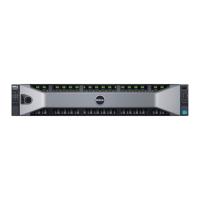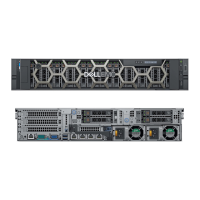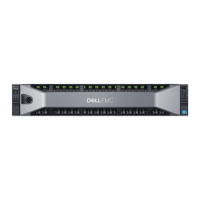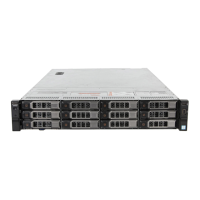Table 27. Continuous Operation Specifications for ASHRAE A4
Temperature Specifications
Allowable continuous operations
Temperature range for
altitudes <= 900 m (<=
2953 ft)
5–45°C (41–113°F) with no direct sunlight on the equipment
Excursion Limited Operation 5-35°C (41-95°F) Continuous Operation
35-40°C (95-104°F) 10% Annual Runtime
40-45°C (104-113°F) 1% Annual Runtime
Humidity percent range
(non-condensing at all
times)
8% RH with -12°C minimum dew point to 90% RH with 24°C (75.2°F) maximum dew point
Operational altitude de-
rating
Maximum temperature is reduced by 1°C/125 m (1.8°F/410 Ft) above 900 m (2953 Ft)
Table 28. Common Environmental Specifications for ASHRAE A2, A3 and A4
Temperature Specifications
Allowable continuous operations
Maximum temperature gradient (applies to both
operation and non-operation)
20°C in an hour* (36°F in an hour) and 5°C in 15 minutes (9°F in 15
minutes), 5°C in an hour* (9°F in an hour) for tape hardware
NOTE: * - Per ASHRAE thermal guidelines for tape hardware, these are
not instantaneous rates of temperature change.
Non-operational temperature limits -40 to 65°C (-40 to 149°F)
Non-operational humidity limits 5% to 95% RH with 27°C (80.6°F) maximum dew point
Maximum non-operational altitude 12,000 meters (39,370 feet)
Maximum operational altitude 3,048 meters (10,000 feet)
Table 29. Maximum vibration specifications
Maximum vibration Specifications
Operating 0.21 G
rms
at 5 Hz to 500 Hz for 10 minutes (all operation orientations)
Storage 1.88 G
rms
at 10 Hz to 500 Hz for 15 minutes (all six sides tested)
Table 30. Maximum shock pulse specifications
Maximum shock pulse Specifications
Operating Six consecutively executed shock pulses in the positive and negative x, y,
and z axis of 6 G for up to 11 ms
Storage Six consecutively executed shock pulses in the positive and negative x, y,
and z axis (one pulse on each side of the system) of 71 G for up to 2 ms
Particulate and gaseous contamination specifications
The following table defines the limitations that help avoid any equipment damage or failure from particulates and gaseous
contamination. If the levels of particulates or gaseous pollution exceed the specified limitations and result in equipment damage
or failure, you may need to rectify the environmental conditions. Remediation of environmental conditions is the responsibility of
the customer.
32
Technical specifications
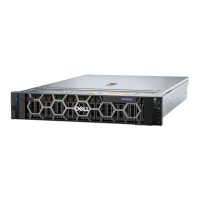
